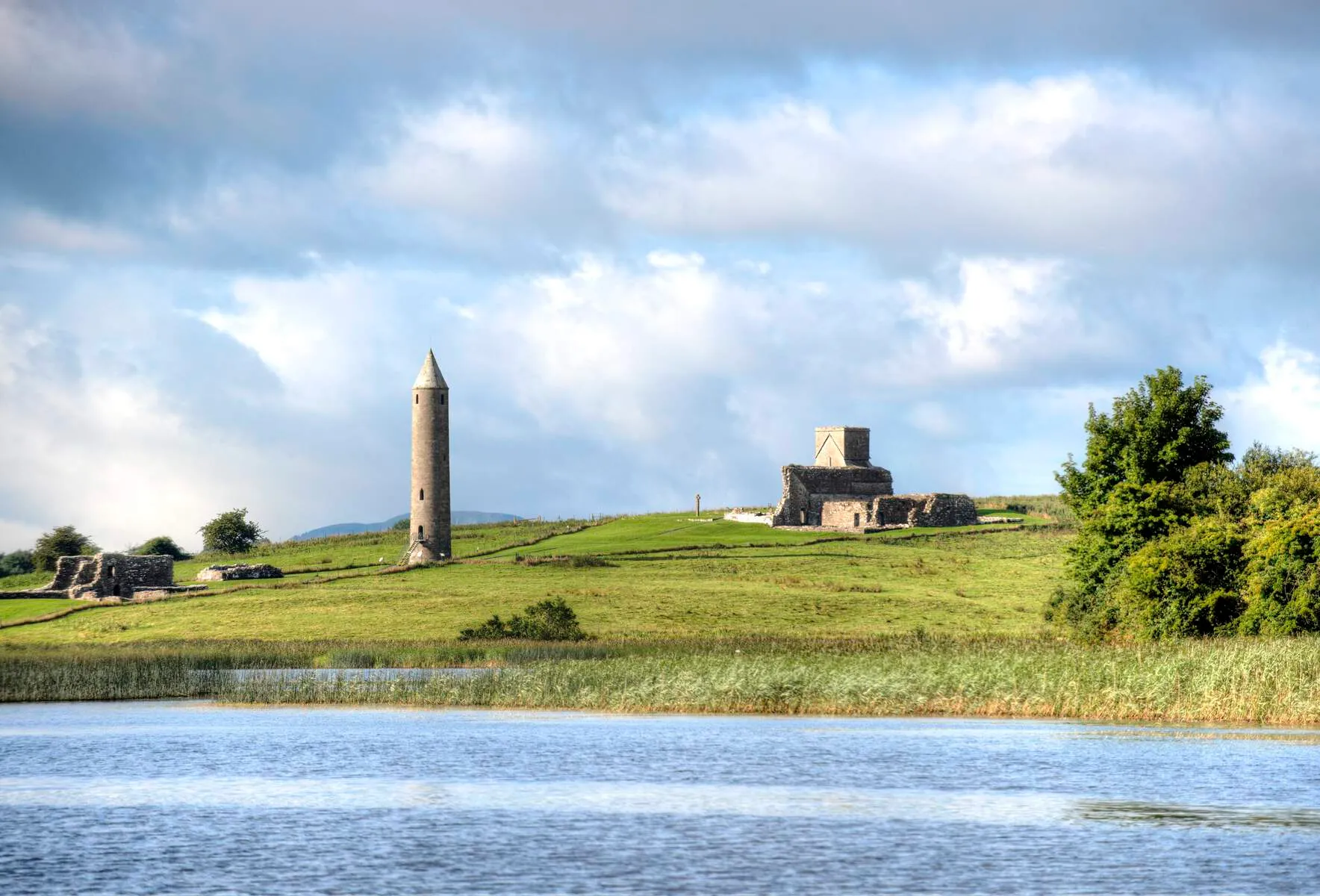Lough Erne, County Fermanagh's emerald-studded waterway, unfolds like an ancient scroll where time slows at the edge of 154 islands and mist-kissed horizons. Here, history rises from the water: climb Devenish Island's 30-meter round tower for panoramic views over a landscape that cradled monastic saints and medieval warriors. The lake's labyrinthine shores are dotted with relics - a 12th-century abbey on Devenish, Victorian splendor at Crom Castle, and Boa Island's mysterious Janus-headed stone sentinels - while Belleek Pottery crafts delicate Parian China since Queen Victoria's reign. This is a place where folklore feels alive: walk trails lined with the echoes of warrior queen Maeve's legends or glide silently by 200 hidden islands in a glass-bottom boat.
Beyond its storied past, Lough Erne hums with adventure. Paddle through reed-fringed coves teeming with kingfishers, test your grit on Cuilcagh Mountain's "Stairway to Heaven" boardwalk, or tee off at the Faldo Course - where water hazards frame every shot against glacial-blue waters. By night, savor fresh trout at lakeside pubs in Enniskillen, then retreat to Lough Erne Resort's infinity pool as twilight paints its 600-acre peninsula in gold. Whether you're tracing pilgrim routes through monastic ruins or chasing Atlantic winds on a hydrobike, this lakeland offers Ireland's rarest blend: untamed wilderness and centuries of human artistry, all within a single breathless horizon.
Jump to section:
Things to See and Do
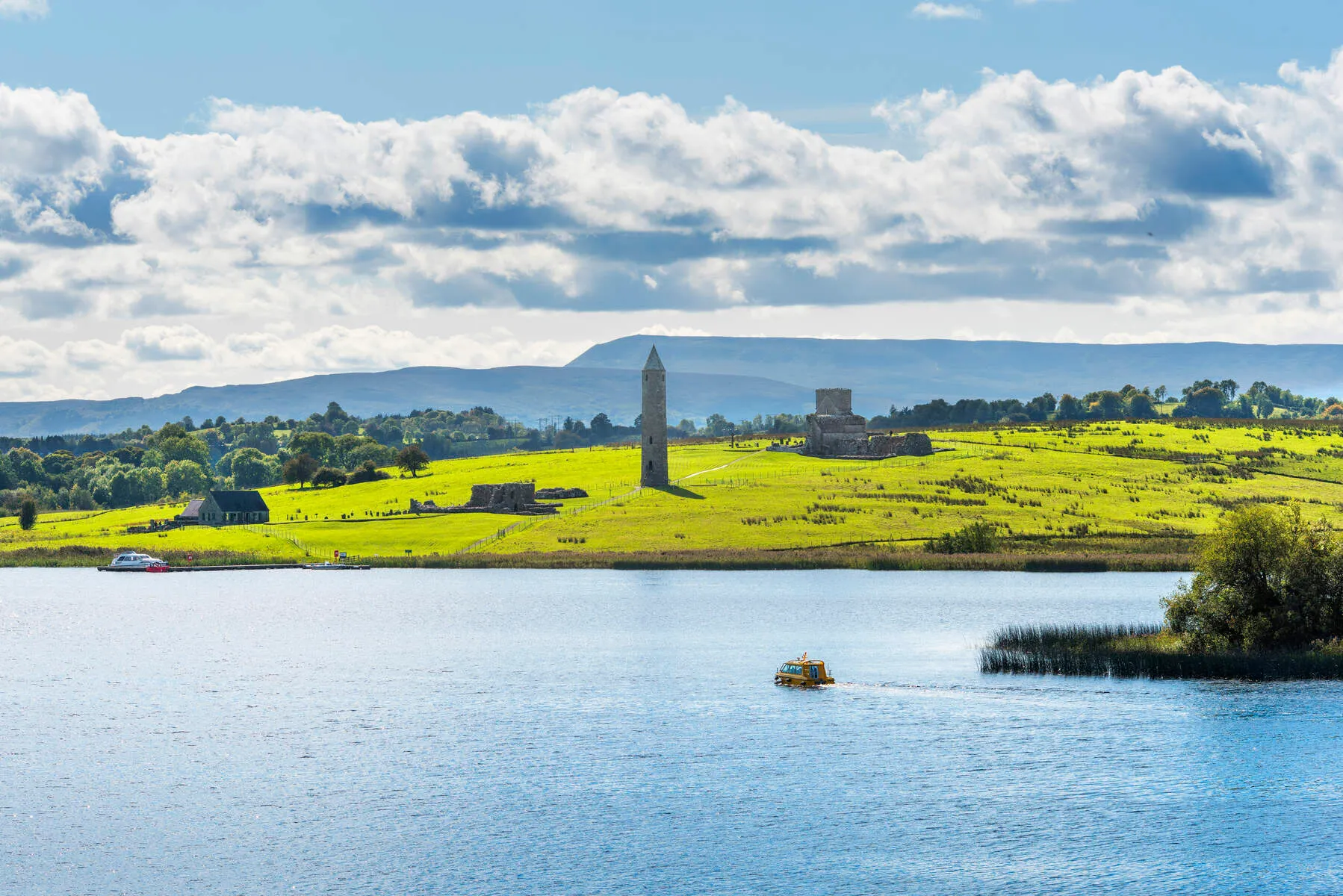
Devenish Island
Historic monastic site featuring a 12th-century round tower and ancient ruins. Accessible via boat tours from Belleek or Gublusk Marina, offering panoramic views of Lough Erne.
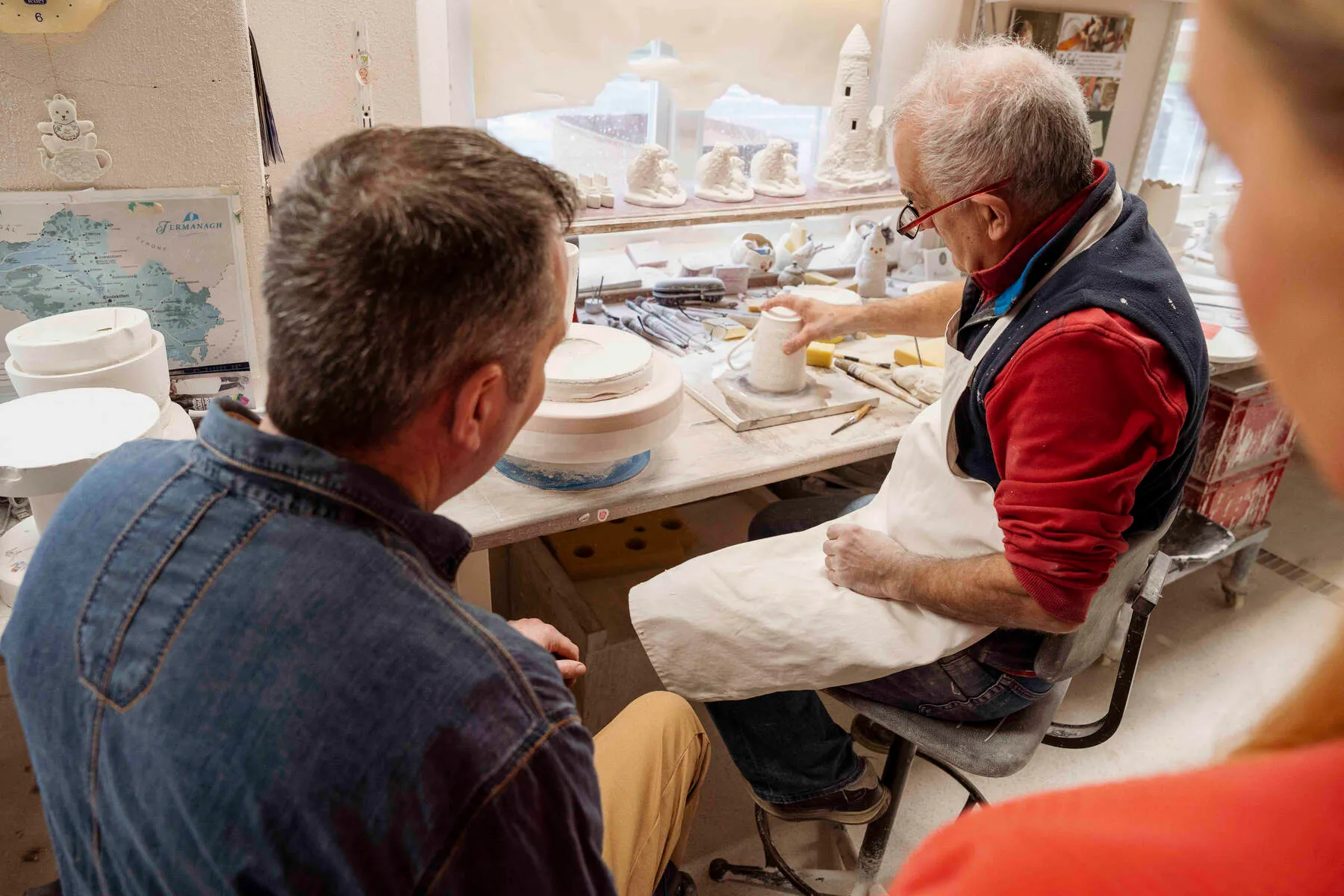
Belleek Pottery
World-renowned pottery studio producing intricate Parian China since 1857. Features hands-on workshops and a museum showcasing its artistic heritage.
Enniskillen Castle Museum
Strategic Norman fortress housing exhibits on the Inniskilling Regiment and local history. Includes a curated collection of artifacts from Northern Ireland's past.
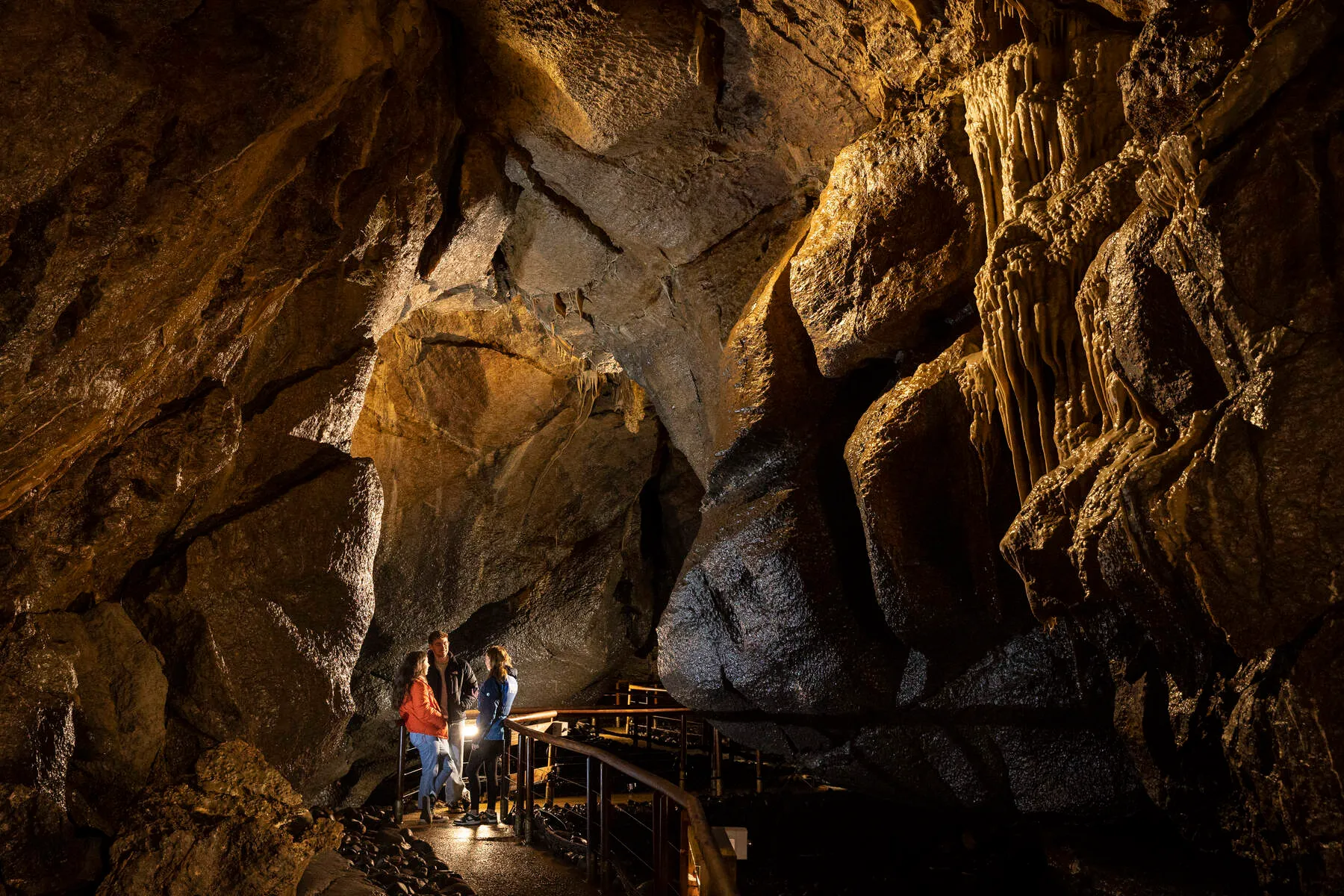
Marble Arch Caves Global Geopark
UNESCO-listed limestone caves with guided tours through crystal formations and underground rivers. Part of a protected natural landscape spanning mountains and forests.
Cuilcagh Boardwalk Trail
Stunning boardwalk path leading to the 'Stairway to Heaven' viewpoint at Cuilcagh Mountain's summit. Features rugged bog landscapes and mountain vistas.
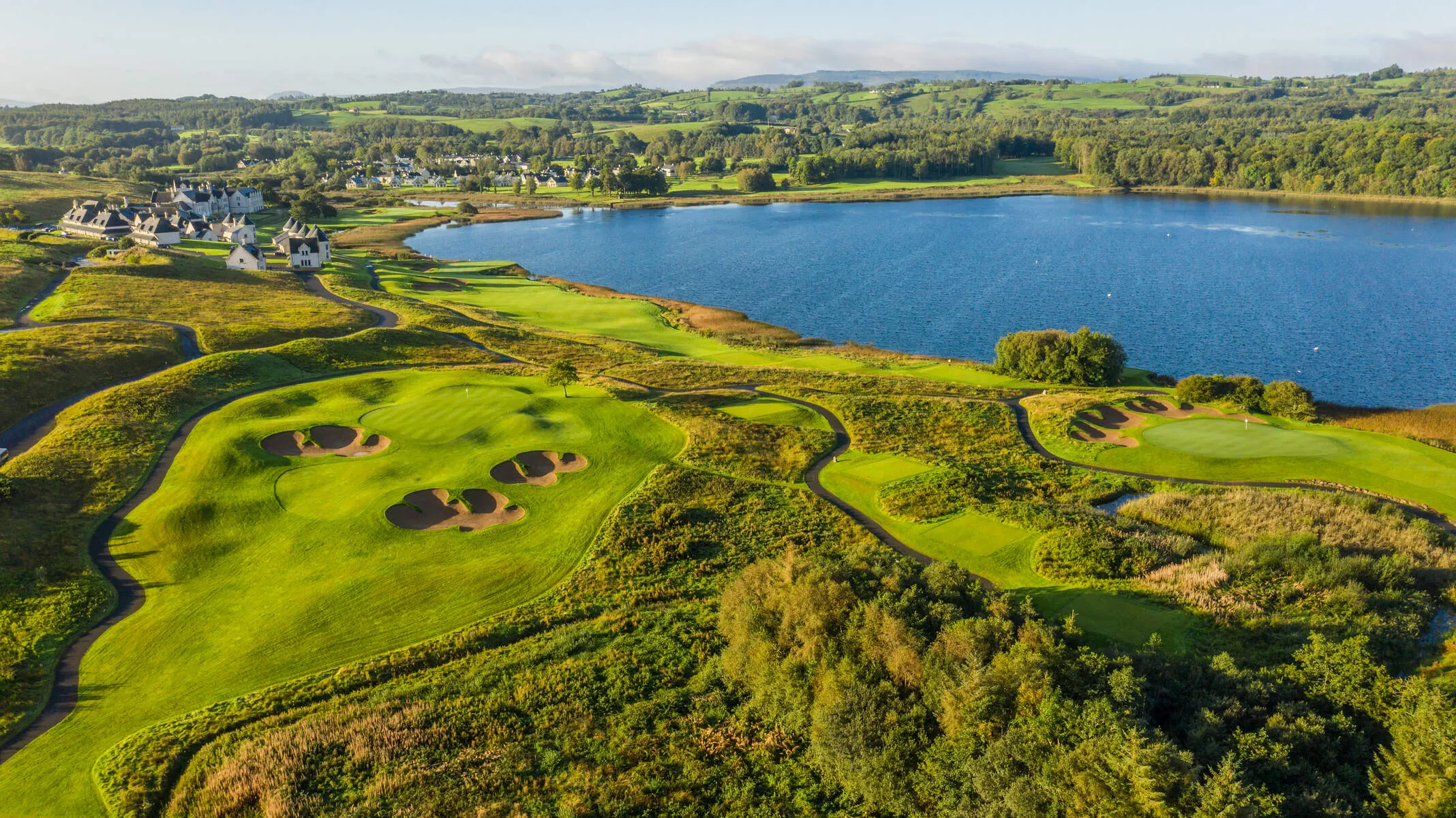
Lough Erne Golf Resort
Premier golf destination featuring Nick Faldo-designed courses (Faldo Course & Castle Hume) hosting major tournaments like the 2014 European Tour event.
Florence Court
18th-century estate with formal gardens, woodland trails, and a museum showcasing art and artifacts. Surrounded by panoramic views of the surrounding mountains.
Castle Archdale Country Park
Family-friendly watersports hub offering kayaking, wakeboarding, and walking trails through deer-filled woodlands. Home to the Enniskillen War Memorial Museum.
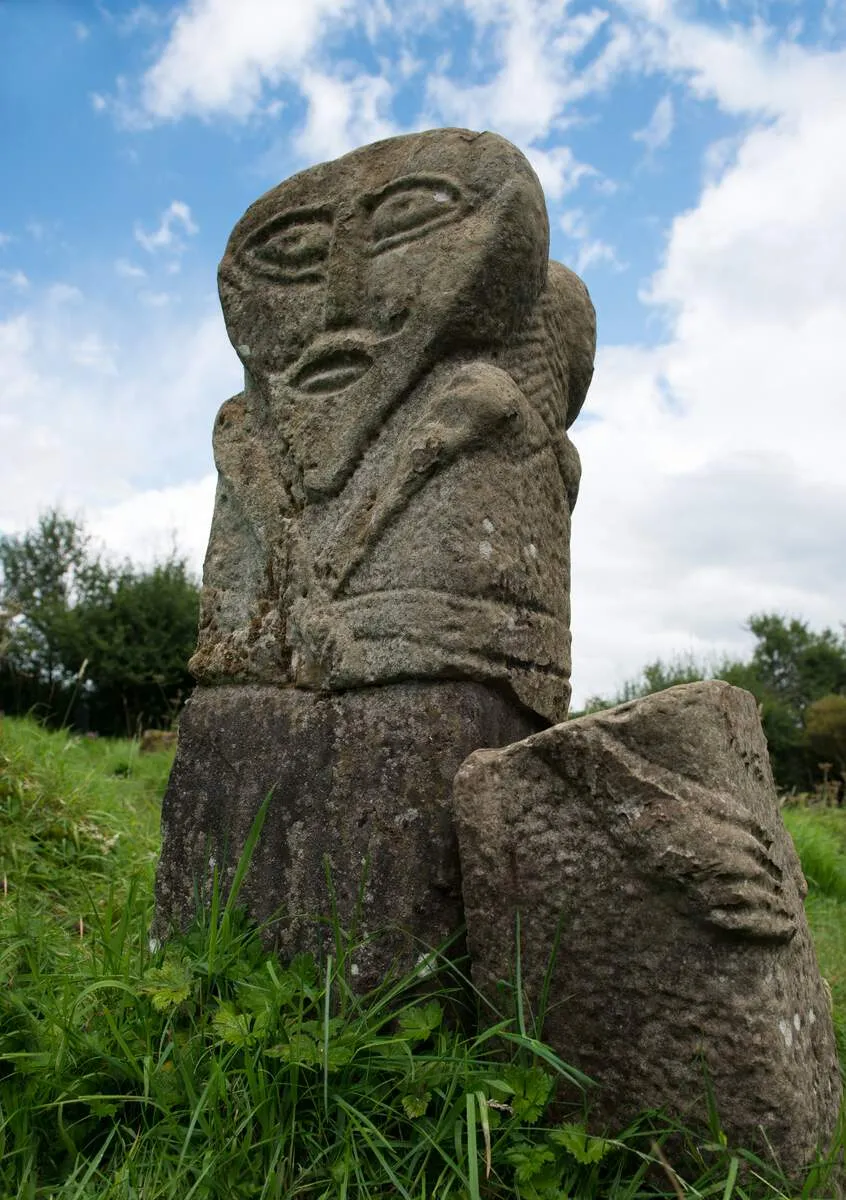
Boa Island Janus Stones
Ancient 5th-century carved stone figures (Janus heads) set within a serene lakeside location. Central to the Lough Erne Pilgrim Way cultural route.
Crom Castle & Gardens
Well-preserved Victorian castle situated in a 40,000-acre estate with manicured gardens and panoramic lake views. Offers guided tours of its historical interiors.
Ulster American Folk Park
Living history museum depicting the Great Famine migration journey from Ulster to America. Features replicated 19th-century Irish and American pioneer villages.
Lough Navar Forest
Extensive woodland spanning 4,000 acres within the Marble Arch Caves Geopark. Offers hiking trails through peat bogs and wildlife-rich habitats.
Lough Erne Yacht Club
Ireland's oldest sailing club (founded 1820) offering boating rentals and hosting the annual Lough Erne Regatta. Located at Gublusk Bay.
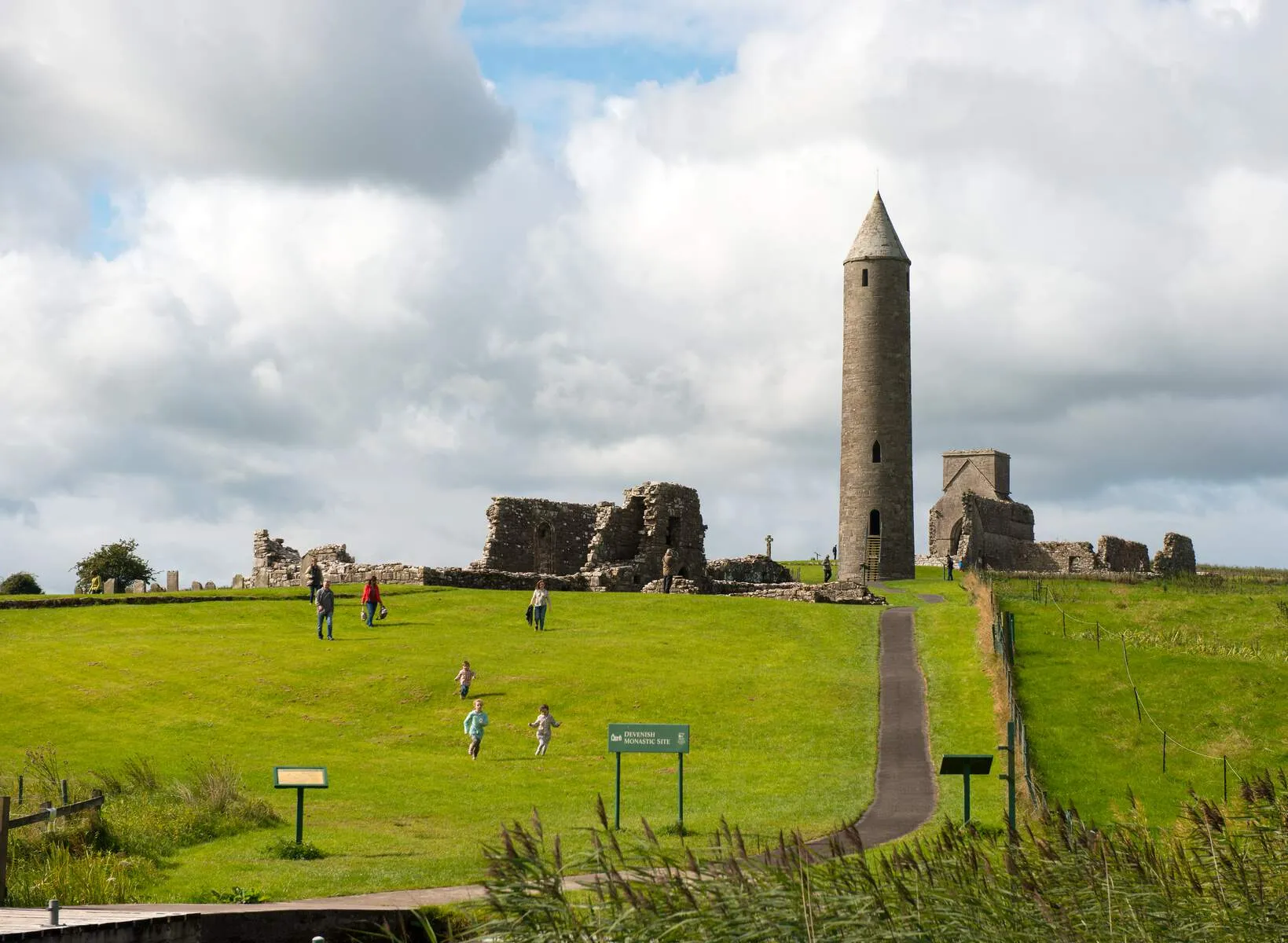
Devenish Pilgrim Way
Ancient pilgrimage route linking Devenish Island to Temple Simon via monastic sites and nature trails. Celebrates Lough Erne's Christian heritage with guided tours.
Getting There
By Air
-
The nearest airports are Belfast International Airport (BFS) and George Best Belfast City Airport (BHD), both of which are approximately 1-2 hours drive from Lough Erne.
-
Dublin Airport (DUB) is also an option, with a journey time of around 2 hours and 30 minutes to Lough Erne by car.
-
Enniskillen Airport (St Angelo) is a small regional airport located about 2 miles from Enniskillen town, but it only offers limited flights.
By Car
-
From Belfast, take the M1 motorway westbound and then the A4 which brings you to Enniskillen, the journey takes around 90 minutes.
-
From Dublin, take the M3 motorway northbound towards Cavan and then follow the A3 through Belturbet, the journey takes around 2 hours and 15 minutes.
-
Lough Erne is located in County Fermanagh, Northern Ireland, and can be accessed via the A46 road from the M1 motorway.
By Bus
-
Translink operates bus services from Belfast to Enniskillen, including the Goldline 261 service, which takes around 2 hours and 15 minutes.
-
Bus Eireann operates daily services from Dublin (Busárus) to Enniskillen, taking around 3 hours.
-
Regular bus services operate between Enniskillen and other major towns and cities in Northern Ireland, including Belfast and Derry.
By Train
-
The nearest train station is in Lisburn, which is about an hour's drive from Enniskillen.
-
You can take a train to Portadown or Belfast Central, and then take a taxi or bus to get to Lough Erne.
Other Options
-
A canal, the Shannon–Erne Waterway, runs between the upper end of the River Shannon and the River Erne, allowing boat movements from the Shannon estuary in southwest Ireland to Lough Erne.
-
The section of the Ulster Canal connecting Lough Erne to Clones is being planned for navigation to be restored by Waterways Ireland.
Events & Festivals 2025
There are currently no events listed. If you would like to add an event, please contact us.
History
Lough Erne's history stretches back thousands of years, with evidence of early human settlement around its shores. The lakes played a significant role in local trade and transportation, and their strategic importance is reflected in the numerous historic castles and ruins that dot the landscape. Enniskillen Castle, for example, has a long and complex history dating back to the 15th century.
The area was also an important center for early Christian monasticism, with Devenish Island being a major hub. Founded by St Molaise in the 6th century, the island's monastic site was raided by Vikings and burned in the 12th century, but it rose again to flourish in the Middle Ages. The remains of the buildings on the island today date from the 12th, 13th, and 15th centuries, including St Molaise's Church, St Mary's Abbey, and a round tower.
Other islands on Lough Erne are also steeped in history and intrigue. White Island, situated in Castle Archdale Bay, is home to the ruins of an ancient church built on the site of a 6th-century monastic settlement. The island features a group of mysterious carved figures and a still-intact arched Romanesque doorway, which are believed to have been seized during a Viking raid in the 9th century.
Boa Island, located near the north shore of Lower Lough Erne, is named after the ancient goddess of war, Badhbh. The island is home to two enigmatic statues, including the Boa Island bilateral figure, which is regarded as one of the most remarkable stone figures in Ireland. This Janus-like figure has two faces and is thought to represent a Celtic deity.
The lakes have also played a significant role in Irish mythology and folklore, with stories of warrior queens, high kings, and giants. The area was later settled by the Menapii, a Celtic tribe who gave their name to Fermanagh and Monaghan. During World War II, RAF Castle Archdale was based on Lough Erne, providing an essential airbase for the Battle of the Atlantic.
In more recent times, Lough Erne has hosted significant events, including the 39th G8 summit in 2013. The area's rich history and natural beauty continue to attract tourists and pilgrims alike, with many drawn to the Lough Erne Pilgrim Way, a historic Christian pilgrimage route that links the sites of early Christian monasticism throughout the Fermanagh Lakelands.
